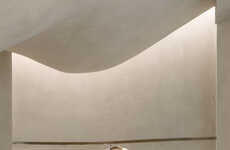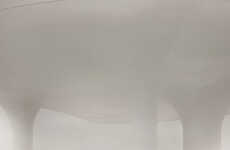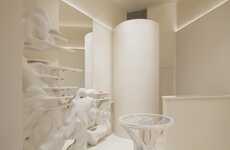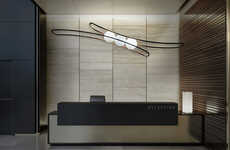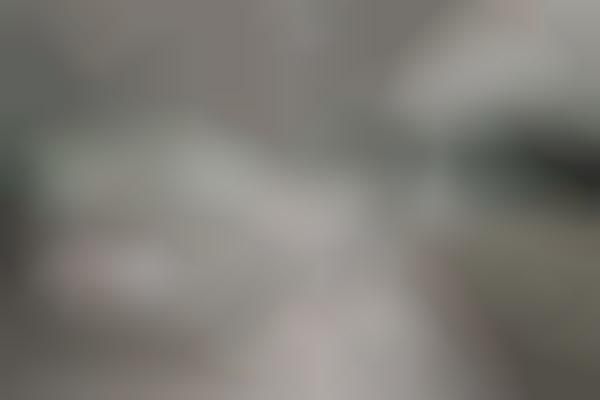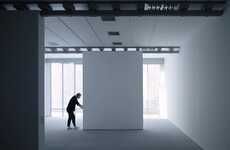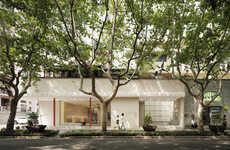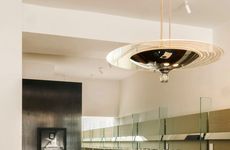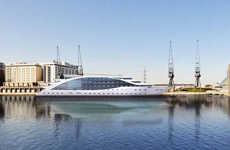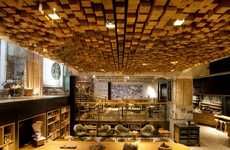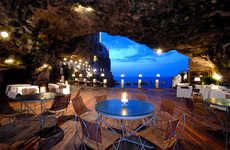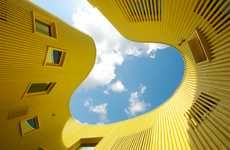
The Duras Daiba Interior by Sinato Plays a Trick on the Eyes
Katherinev123 — August 26, 2011 — Art & Design
References: sinato.jp & retaildesignblog.net
Tokyo shoppers who set foot in the Duras Daiba boutique are in for a treat. This mall shop has an interior -- designed by Sinato -- that decieves the eyes: the ceiling looks lower than it actually is.
The reason for this visual deception? To bring the customers as close to the product offerings as possible. The designers at Sinato created this special spacial design to eliminate the "void" that usually accompanies high ceilings; these large spaces are typically useless because in stores, the "buying and selling is centered close to human body," explains The Retail Blog.
To create the Duras Daiba boutique's spacial distortion, the Sinato designers installed a fake ceiling 2.25 meters high (the actual ceiling is 3.65 meters high) made of expand-metal and stepped platforms, which offer places to display bags, heels and other accessories.
The reason for this visual deception? To bring the customers as close to the product offerings as possible. The designers at Sinato created this special spacial design to eliminate the "void" that usually accompanies high ceilings; these large spaces are typically useless because in stores, the "buying and selling is centered close to human body," explains The Retail Blog.
To create the Duras Daiba boutique's spacial distortion, the Sinato designers installed a fake ceiling 2.25 meters high (the actual ceiling is 3.65 meters high) made of expand-metal and stepped platforms, which offer places to display bags, heels and other accessories.
Trend Themes
1. Faux Ceiling Design - The creation of faux ceilings can be used to create personalized experiences that can attract and engage customers within retail stores.
2. Unique Spacial Designs - The use of unique spacial designs can provide an opportunity for businesses to differentiate their products and overall brand experiences, delivering a lasting impression for consumers.
3. Optical Illusion Interiors - Incorporating optical illusions in interior design can create a visually interesting and playful atmosphere, making the experience more memorable for customers.
Industry Implications
1. Retail Industry - Using creative spacial designs can transform a customer’s shopping experience, thus creating higher foot traffic and more sales in the retail industry.
2. Hospitality Industry - By incorporating unique spacial and interior designs in hotels or restaurants, they can attract more customers by offering a unique and distinctive experience that sets them apart from others within the hospitality industry.
3. Real Estate Industry - Integrating optical illusions into property design and architecture can attract tenants by creating a visually stimulating and innovative living environment, thus improving sales and occupancy rates within the real estate industry.
3.9
Score
Popularity
Activity
Freshness


